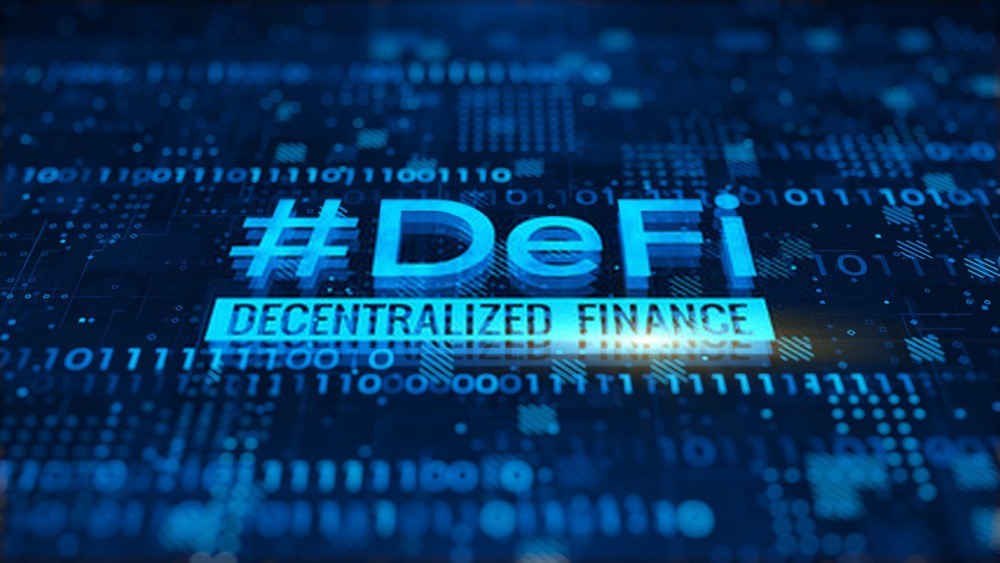Decentralized finance is the application of blockchain technology, cryptocurrencies, smart contracts, and peer-to-peer services to the financial industry. DeFi creates open and decentralized finance protocols and markets, enabling anyone to build financial applications. Decentralized finance (DeFi) has been one of the fastest growing and most used blockchain applications so far.
DeFi began with decentralized exchanges such as Uniswap, EtherDelta and 0x Exchange, but has evolved to include decentralized lending, derivatives, margin trading, and prediction markets. DeFi is revolutionizing the financial industry and enabling new Decentralized financial products.
Decentralized finance is any form of financial asset that is created, stored, transmitted and traded using blockchain technology. Imagine a world where anyone, anywhere can access loans and investments without having to rely on a bank or financial institution. This is a world where Decentralized finance (Defi) can become a reality. The Defi movement is pushing to make blockchain technology more mainstream, and it’s already starting to change how lending, payments, trading, and investing are done.
Defi is also disrupting payments. Crypto-backed stable coins like MakerDAO’s Dai, and the Gemini Dollar are providing an alternative to fiat money. Stable coins like Dai are pegged to an asset, like the U.S. dollar, and its value remains stable. Unlike cryptocurrencies, which are highly volatile, stable coins like Dai can be used as a payment method.
Decentralized exchanges like 0x, Kyber Network, Huobi DEX, and PancakeSwap are Defi dapps allowing traders to trade peer-to-peer without any intermediary.
DeFi applications are funding themselves with Ethereum and other competing cryptocurrencies. DeFi is fueling the growth of Ethereum, which has experienced unprecedented adoption in 2021.
These DeFi applications enable anyone to trade cryptocurrencies, lend and borrow money, and make financial bets without a centralized entity such as a bank or financial institution. The success of DeFi has fueled the growth of Ethereum as DeFi is funding itself with Ethereum, which has led to Ethereum’s unprecedented surge.
Contents
What is Decentralized crypto exchange (DEX) ?
A decentralized exchange is an alternative to a centralized exchange where transactions are handled by the users (peer to peer), without a middleman. Decentralized exchange is more secure, faster, and cheaper compared to centralized exchanges. Decentralized exchanges are gaining popularity as they offer more security, privacy, and anonymity compared to centralized exchanges. The decentralized exchanges (DEX) run on blockchain technology. To trade on decentralized exchanges, a user needs to deposit their tokens in the wallet. The deposited tokens can be used to buy any other token on the DEX.
Liquidity for the exchange of tokens on a DEX is done by the users themselves. Liquidity providers earn money in the form of commissions, which encourages users to deposit their tokens in the liquidity pools of these exchange platforms.
The main advantages of DEX
- The decentralized exchanges use smart contracts, which allow users to trade tokens directly from the blockchain without paying any intermediaries.
- Unlike conventional exchanges, the exchanges perform their trading operations on a decentralized network. So, the DEXs are not controlled by any third party.
- A decentralized exchange offers enhanced security, privacy, and anonymity. The DEXs allow users to trade cryptocurrencies without sharing their personal details such as name, address, and proof of identity.
What is Decentralized crypto lending ?
Decentralized crypto lenging is the practice of lending crypto assets to borrowers. The lending transaction is recorded in the blockchain. Borrowers get instant access to their funds, while lenders can retrieve their funds and earn interest for the lending services. Why do lenders lend? Lenders lend crypto assets to borrowers in exchange for an interest, which is paid out automatically. So, how does it work? Borrowers borrow money from lenders. Lenders lend money to borrowers. Borrowers pay interest on money borrowed. Lenders receive interest on money lent.
For exemple: To lend cryptocurrency, you need to deposit coins as collateral with the lending platform. The lending platform will then credit you ETH and lock your coins (collateral). The lending platform will then automatically distribute the borrowed coins to borrowers. Lenders can retrieve their funds even if the borrower doesn’t pay, while borrowers can’t access their funds until the loan is fully paid off. Everything is done through a decentralized finance application based on a smart contract who is an application based on the blockchain.
What is Yield Farming in decentralized finance (DeFi)?
Yield Farming is a strategy used by crypto lenders to increase their profitability. Lenders can borrow coins from DeFi lending platforms such as Compound Finance, reinvest the interest in other lending protocols to maximize the return and sell them for fiat at an exchange. Yield farming is all about maximizing the ratio of profits of liquidity providing and lending to hearn higher interest payments).
How does Yield Farming work?
To understand how Yield Farming works, we first need to understand the process of borrowing and lending cryptocurrency.
Borrowing Cryptocurrency:
To borrow cryptocurrency, you need to buy it using fiat on an exchange. You can finance the purchase with a loan from any of the DeFi lending platforms. When you borrow a coin, the lending platform will lock your coins (collateral) and send you an Ethereum (ETH) or another token in your wallet address. The lending platform’s smart contract will transfer the borrowed coins to this address. Once you have received the coins, you can trade them on the market but you need to pay back the lender to unlock the deposited collateral.
Lending Cryptocurrency
To lend cryptocurrency, you need to deposit coins on the lending platform. The lending platform will lock your coins on the protocol and use this fund to lend to borrowers. The lending platform will then automatically distribute the borrowed coins to borrowers and send you your interests.

